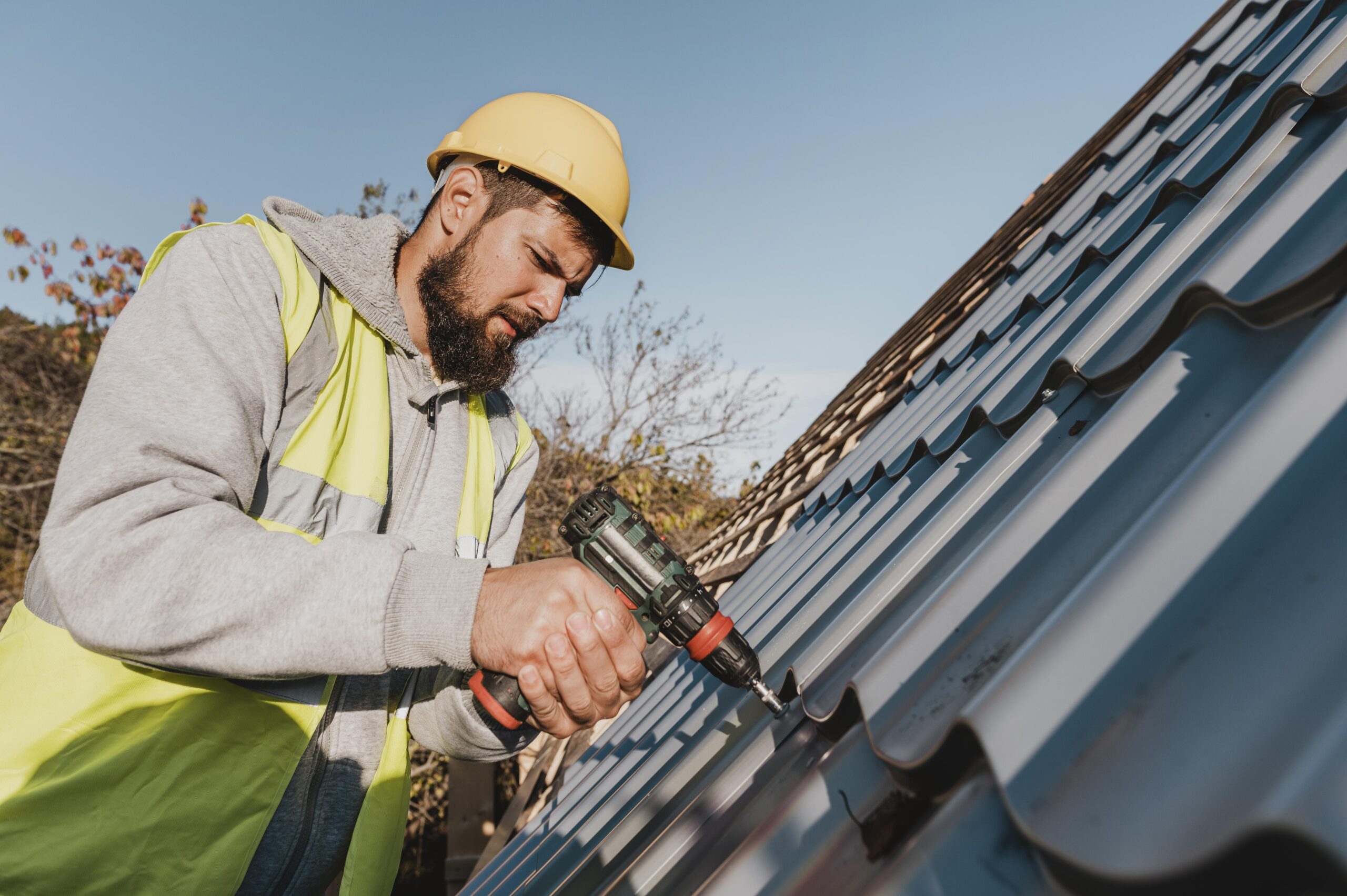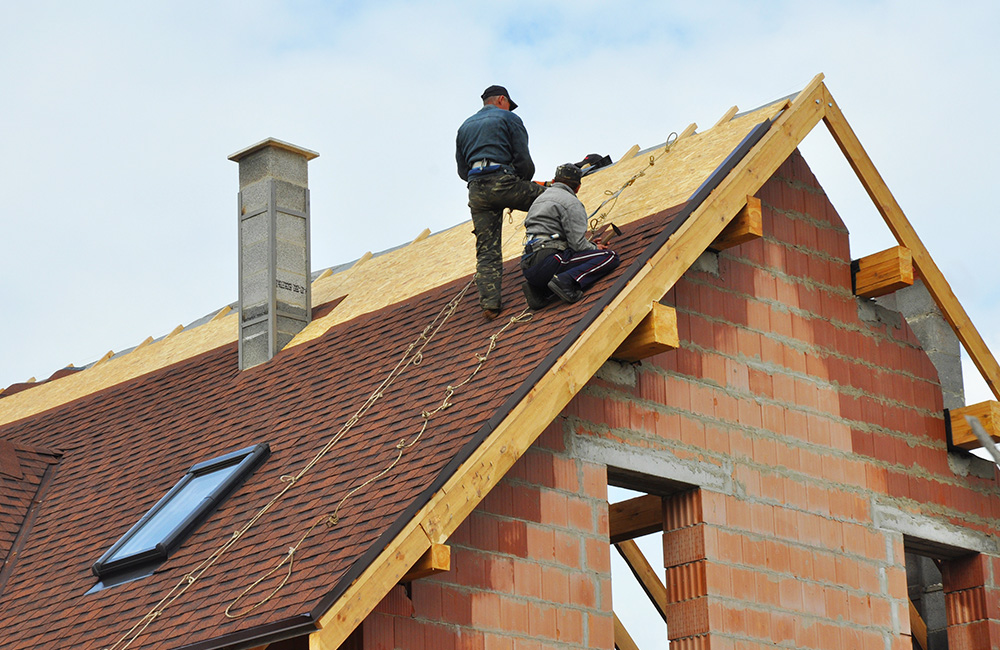Exploring the Different Sorts Of Roofing Systems: Which One Is Finest for Your Home?
When taking into consideration the myriad types of roofing systems offered, it is vital to examine exactly how each alternative aligns with your home's special demands, consisting of environment conditions, aesthetic choices, and structural functionality. From the traditional gable roofing that effectively networks rainwater to the modern-day level roofing offering city adaptability, each style offers distinctive benefits and obstacles.
Gable Roofings
Saddleback roofs, defined by their triangular shape and sloping sides, are a popular selection amongst homeowners seeking both aesthetic charm and capability. This roof design effectively permits for efficient water runoff, minimizing the danger of water pooling and succeeding damage. Additionally, the steep slopes create ample attic room area, which can be used for storage and even transformed right into living areas.
One of the primary benefits of gable roofs is their capability to hold up against rough climate condition. The layout assists in reducing wind resistance, making them especially ideal for areas susceptible to storms. Moreover, saddleback roofs can be built utilizing a selection of products, including tiles, tiles, and steel, providing property owners with adaptability in design and budget.
From a building perspective, gable roof coverings can improve the aesthetic charm of a home, using a timeless and ageless look. In general, gable roofs stay a popular alternative due to their balance of practicality and style, appealing to a wide variety of home owners.
Apartment Roofs
While often forgotten in support of even more typical roof covering designs, level roofings provide distinct benefits that satisfy details architectural demands and modern layout choices. These roofings are identified by their marginal pitch, enabling effective use area, particularly in urban settings where optimizing square video is important.
One substantial advantage of flat roof coverings is their convenience. They can be utilized as additional home, such as roof yards, outdoor patios, or photovoltaic panel setups, boosting the functionality of a home. Additionally, flat roofing systems are normally simpler and more secure to browse throughout maintenance, helping with repair work and assessments without the challenges presented by high slopes.
Level roofs can likewise be more cost-effective in terms of materials and installation. With an easier style, they usually call for fewer resources, converting into lower labor prices. However, it's critical to consider water drainage and waterproofing, as level roofing systems can be prone to merging water otherwise properly developed.

Hip Roof Coverings
Hip roofs stick out for their sophisticated design and architectural stability, making them a preferred choice amongst house owners. Identified by inclines on all four sides, hip roof coverings supply a healthy aesthetic that matches different building designs - roof repair oahu. The symmetrical nature of these roof coverings helps to distribute weight uniformly, boosting security and durability
One of the essential advantages of hip roof coverings is their ability to endure harsh climate condition. The sloped surface areas facilitate reliable water drain and snow overflow, decreasing the threat of leakages and structural damage. Additionally, the layout minimizes wind resistance, making hip roofings less susceptible to wind uplift compared to other roof covering types.


Lost Roof Coverings
Dropped roofing systems, as opposed to the intricacy of hip roofing systems, provide a streamlined and minimal design that interest modern appearances. Defined by a solitary sloping surface area, dropped roofing systems are frequently made use of in contemporary design, garden sheds, and other practical frameworks. This simpleness not just improves visual charm however likewise permits effective water runoff, making them ideal for numerous climates.
One of the primary advantages of shed roofing systems is their cost-effectiveness. With fewer products needed and a straightforward setup process, homeowners can save both time and money. The layout check my blog likewise allows the unification of large windows or skylights, promoting natural light and creating spacious insides.
However, it is essential to take into consideration the prospective disadvantages, including restricted insulation alternatives and the need for cautious style to prevent extreme warm buildup. In addition, dropped roofs might not mix effortlessly with conventional architecture, which might be an issue for some homeowners.
Inevitably, shed roofing systems provide a fashionable and functional roof covering service for those seeking modernity and performance. When picking a roof covering type, evaluating personal useful requirements and aesthetic preferences will certainly lead house owners to the most effective choice for their distinct demands.
Mansard Roofings
Mansard roof coverings, defined by their distinctive four-sided style, are a trademark of French design that incorporates sophistication with functionality. This architectural style includes 2 inclines on each side, with the lower incline being steeper than the top one. The unique configuration enables for added space in the top degrees, making it an optimal option for home owners looking for to make best use next page of useful location without broadening the building's footprint.
One of the substantial benefits of a mansard roofing is its versatility. It can be adapted to numerous building designs, from traditional to contemporary, improving the aesthetic charm of any home. In addition, the adequate space produced under the roofing system can quickly accommodate dormer home windows, which permit natural light and ventilation, further improving the convenience of the living location.
Nonetheless, prospective homeowners ought to take into consideration the maintenance requirements connected with mansard roofings. Setup expenses might be greater contrasted to easier roofing layouts due to the intricacy of construction.
Conclusion
In conclusion, the option of an ideal roof covering kind rests on specific requirements, climate factors to consider, and aesthetic choices. Each roofing design offers distinct advantages, such as the effectiveness of saddleback roofs, the modern charm of shed roof coverings, and the security of hip roofing systems. Furthermore, level roofings provide functionality for city environments, while mansard roofs offer added living area regardless of greater installment costs. Eventually, a comprehensive evaluation of these aspects will direct home owners in making an educated decision.
From the traditional gable roofing that effectively networks rain to the modern flat roofing system offering metropolitan flexibility, each style provides unique benefits and challenges (roof repair oahu). In addition, the design lessens wind resistance, making hip roof coverings less prone to wind uplift compared to other roofing system types
Dropped roofs, in comparison to the complexity of hip roofings, use a streamlined and minimalist design that charms to contemporary aesthetics. Each roof style provides unique benefits, such as the performance of gable roofs, the modern charm of shed useful link roofs, and the stability of hip roofings. Flat roofs supply usefulness for metropolitan environments, while mansard roofing systems give additional living space regardless of higher installation costs.